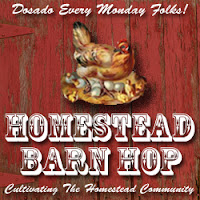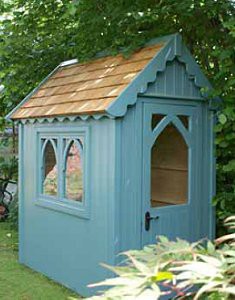
• You can grow food in any location; soil conditions are no longer an issue.
• Compaction of soil is not as great and thus boxes are easier to work.
• Soil tends to drain better.
• Raised beds warm up a bit faster than the ground in spring allowing you to get a slight jump on the season.
• Season extenders are easier to install if needed.
• Weeds are less of an issue and easier to remove.
• Virtually eliminates gophers, moles, voles, etc.
• Water can be concentrated in a specific area.
• More produce productivity per square foot.
• Less bending over! (Or rather, not bending over as far.)
• Gardeners can create pleasing geometrical arrangements and designs with boxes.

By now you may be wondering if there are there any negatives to this because it sounds too good to be true. Yes, there are a few, but not many...
• Raised beds are an investment - typically about $100 per 4' x 6' box.
• Raised beds must be replaced periodically - beds made of redwood last about 10 years.
• Once in place and filled with soil, they are difficult to move (I wouldn't suggest it!).
• The soil must be amended regularly or it will become depleted of nutrients.
• If you need or desire to garden on a really large scale, boxes can seem a bit limiting.
• Some larger crops, such as potatoes, corn, and squash, can seem to take over a box if not well planned.
 |
| Early Spring Plantings |
Despite a few minor negatives, raised bed gardening really is appealing. Years ago, I lived where the soil was rock hard - lots of clay. Planting anything required a jack hammer - literally! It was very discouraging gardening until I tried raised beds. At the time, I didn't research raised beds and I just had my husband build some wood frames about 6 inches high, stuck them where I wanted, filled them with dirt, and started gardening. And it worked!
When we moved to our current homestead, I spent some time learning about what I really should be doing and found out that a 12 inch deep box was better. (Some of mine are actually 18 inches deep, but they don't work any better than my 12 inch deep boxes.) In order to defray some of the cost over time, I just add one or two new boxes each year.
 |
| Early Summer Crops |
 |
| Frost blanket protection from a light frost. |
Making Raised Beds
Materials:
20 feet of redwood boards of 2" x 12"
48 inches of redwood posts 4" x 4" (these can be smaller if you desire)
4' x 6.5' piece of chicken wire (or hardware cloth)
Wood screws
Staple Gun
Directions:
Cut the 20' board down to two 6' lengths and two 4' lengths. Cut the redwood post into four 12" lengths. Assemble following pattern below and using wood screws to attach the longer boards to the square posts.
Your box will not be exactly 4' x 6' when you're done, but doing it this way reduces your costs a bit by purchase the least amount of wood and by having less waste due to extra cuts. So in the end, your box will be a little longer than 6' and a little narrower than 4'. And this is why your chicken wire needs to be at least 6 1/2 feet long.
 |
| Example of 1.5" x 1.5" corner supports. |
 |
| Example of 4" x 4" corner supports. |
Finally, attach the chicken wire to the bottom of the frame you have just made using your staple gun. Flip the box over and place it wherever you desire! If you're placing the boxes on a grass or a weed infested area, just lay down some newspaper first, then your box, and start filling it with gardening soil. The newspaper will kill the weeds and grass over time and then eventually compost into the soil underneath.
Oh, and if you want to add irrigation, be sure to do so before you add your soil. Just go underneath the box with your pvc pipe and up through the chicken wire. I added a faucet to mine and I attach a soaker hose to it.

Q and A
• Can you make the beds any size you want? Absolutely, but anything over 4 feet wide will make it difficult to reach the center when you want to weed, prune, or harvest.
• What about length? Length isn't so much of an issue, but if you get the beds too long, the boards will need more support in the center to prevent them from bowing out. Eight feet is about the max you want to go.
• You said you had 18 inch deep boxes. Isn't that better? Yes and no. Yes for root veggies, although they will work down through the wire on the 12" boxes if necessary, but when you make the 18" deep boxes, you'll have to use more than one board on the side going up. This not only costs more, but you lose water from between the boards; this is why I spend the money on the 12" boards instead of two 6" boards when making my boxes now. (You can see from my photos I've tried both). The cons of the 18" deep outweigh the pros in this situation.
• Can you use any kind of wood? Not if you want your boxes to last. You'll need a material that can stand up to rotting for as long as possible. Do not use treated lumber because it will leech chemicals into your soil and produce. Around here, it is common to pick up railroad ties for free, but they're treated with creosote and you don't want to have that in your beds. Redwood or cedar naturally resists bugs and will not rot quickly. If your boxes last 10 years, your annual cost should not exceed $10 per box. This is another reason why I staggered building mine; they shouldn't all need replacing at the same time and thus become cost prohibitive.
• Do the corner supports have to be 4" square? No. They are extra sturdy like this, but it's not necessary. I've done different sizes.
 |
| Sugar Snap Peas |
 |
| Zucchini |
 |
| Tomato Plants |
• What do you fill your boxes with? I have done this two ways. I've used a bagged organic potting soil that I purchased from a local nursery and I've also done the lasagna method right in the box where I layer some potting soil, amendments, some dirt from my yard, and compost. Sometimes I till it in and other times, I just layer it up. Both seem to work. And at the end of the season, when I let my chickens into the garden, they till it all up for me again!
There are so many great things to say about raised beds, so I think this topic deserves some more posts. And perhaps in the fall when I have some more photos and I've worked on my season extenders, I can show you some of that, too. A little at a time, right? Today is the first warm day outside and I can hardly wait for the weekend to get out there and get some stuff done! Pray the weather holds!
Have you gardened with raised beds? Please share any tips you can add!



















































